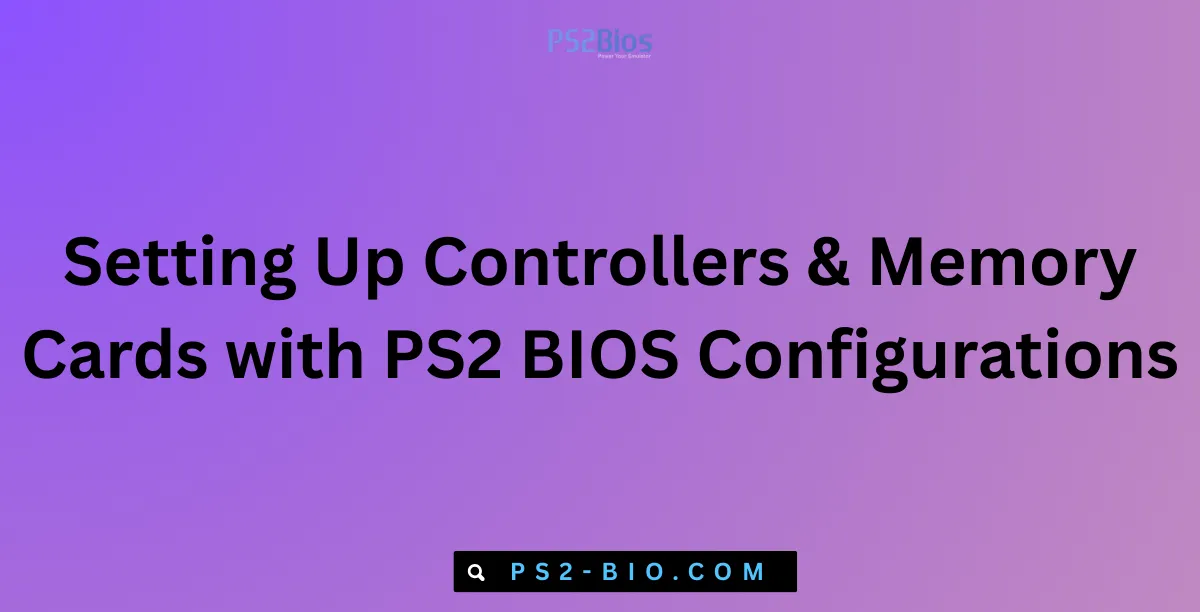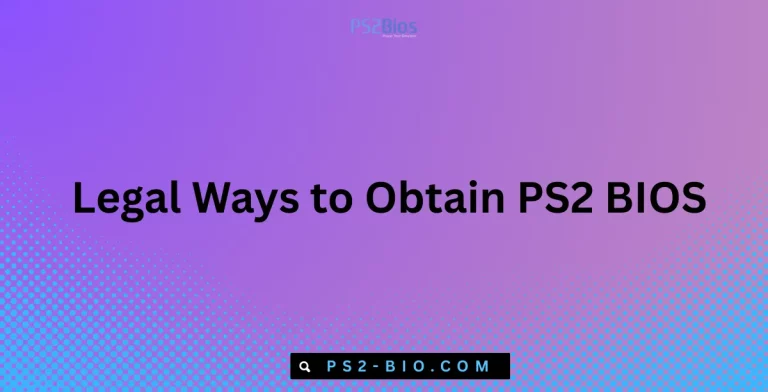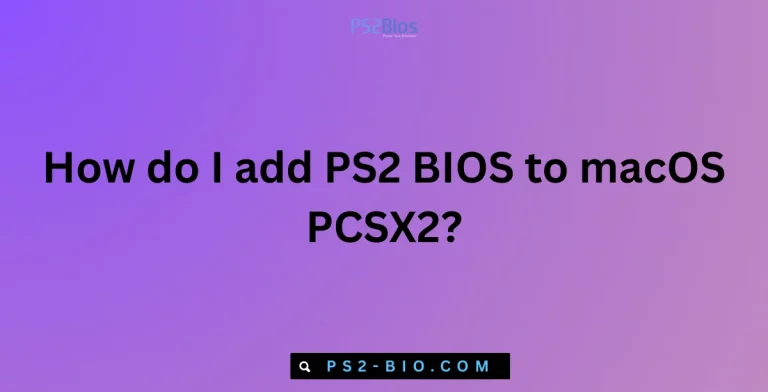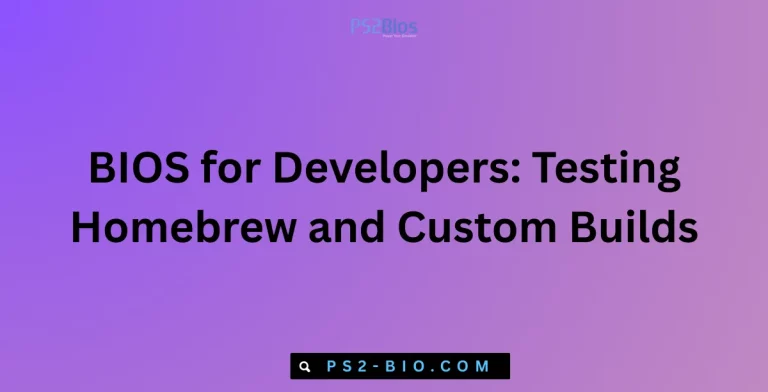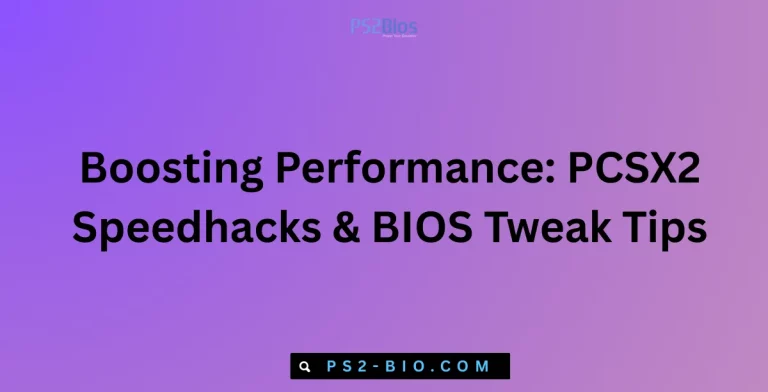Setting Up Controllers & Memory Cards with PS2 BIOS Configurations
Are your PS2 controllers not responding, or your memory cards failing to save games? Understanding PS2 BIOS settings is key to fixing these issues, ensuring smooth gameplay, reliable saves, and full compatibility with all PlayStation 2 games.
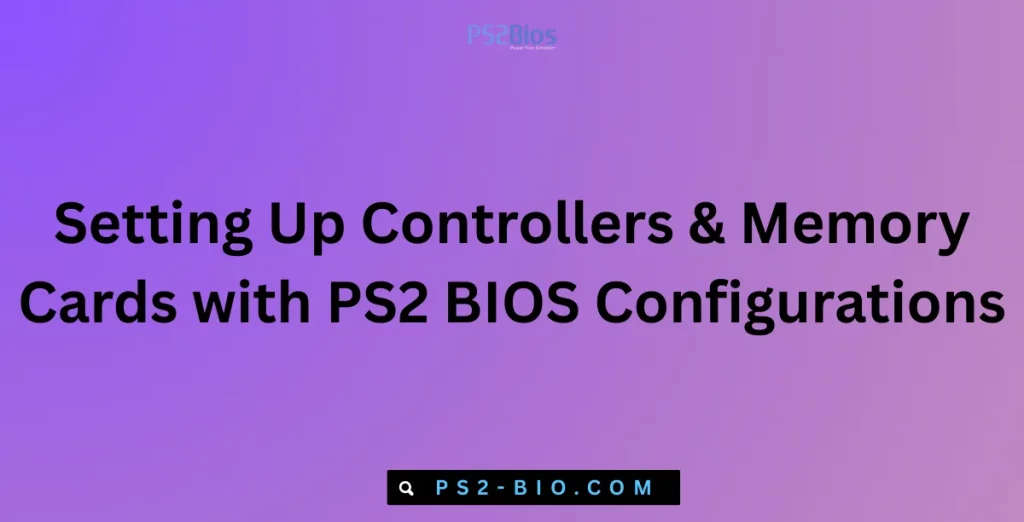
What is PS2 BIOS?
The PS2 BIOS is the core system firmware for the PlayStation 2 console. It initializes hardware, controls memory management, and provides the interface for games and accessories. Without proper BIOS configuration, controllers may not function correctly, and memory cards might fail to save or load game data.
There are two main types of BIOS for PS2:
- Retail BIOS – Original console firmware, required for commercial games.
- Debug BIOS – Used in development or testing environments.
Using the correct BIOS ensures compatibility with both physical PS2 discs and emulator software like PCSX2. Always source your BIOS from a legitimate PS2 console to maintain system integrity.
Controller Setup in PS2 BIOS
Proper controller configuration is essential for accurate gameplay and responsiveness. Here’s how to set it up:
1. Connecting Controllers
- Plug the controller into Port 1 on the PS2 console.
- For two-player games, use Port 2 for the second controller.
- For multitap accessories, connect to Port 1 or 2 depending on the device instructions.
2. Checking Controller Functionality
- Turn on the console and wait for the BIOS main menu to appear.
- Enter the System Configuration option.
- Test button inputs and analog sticks using the on-screen diagnostics.
3. Configuring Analog Mode
- Some games require DualShock 2 analog input.
- Enable Analog Mode in BIOS if not already active.
- This allows full functionality for games that use pressure-sensitive buttons or analog controls.
4. Troubleshooting Common Controller Issues
- Controller not detected: Ensure the cable is fully inserted and the port is clean.
- Buttons unresponsive: Test another controller; if it works, the original controller may be faulty.
- Analog stick drift: Adjust dead zones in emulator BIOS settings or recalibrate if using original hardware.
Memory Card Setup in PS2 BIOS
Memory cards are crucial for saving game progress, system data, and settings. Misconfigured memory cards can result in lost progress or read/write errors.
1. Inserting Memory Cards
- Insert the card into Slot 1 for primary saves.
- Slot 2 is optional but can be used for secondary saves or multiple profiles.
- Always check that the card clicks into place securely.
2. Formatting Memory Cards
- PS2 BIOS allows formatting within System Configuration → Memory Card Utility.
- Format new cards before use to ensure proper file allocation.
- Formatting will erase all existing data, so back up important files if needed.
3. Memory Card Compatibility
- Original Sony PS2 cards are recommended for maximum reliability.
- Third-party cards may work but can cause errors or corrupt saves.
- Avoid using memory cards with known voltage or compatibility issues.
4. Troubleshooting Memory Card Errors
- Card not recognized: Reinsert, clean contacts, or try a different slot.
- Unable to save: Ensure sufficient free space exists; some games require more than 8MB.
- Corrupted saves: Avoid removing the card while data is being written.
Advanced PS2 BIOS Configurations
Beyond controllers and memory cards, BIOS settings allow fine-tuning of your console or emulator experience.
1. Language and Region Settings
- Set the console language to your preference.
- Ensure the region matches your game discs (NTSC-U, PAL, or NTSC-J).
- Incorrect region settings may prevent games from running.
2. Screen Display Settings
- Configure screen type (4:3 or 16:9) for compatibility with your display.
- Adjust RGB/Component video output for optimal image quality.
- These settings can improve graphics clarity, especially on modern TVs.
3. Clock and Time Configuration
- Set the system clock for in-game events that depend on real-time.
- Accurate time ensures games with date-specific events or tournaments function properly.
4. System Diagnostics
- Many BIOS versions include hardware diagnostics.
- Run tests for controllers, memory cards, and expansion devices.
- Diagnosing issues at the BIOS level helps prevent hardware damage.
Setting Up Controllers & Memory Cards in PCSX2
If using an emulator like PCSX2, PS2 BIOS configuration is still essential for accuracy.
1. Loading the BIOS
- Copy the legal BIOS file from your console to the PCSX2 BIOS folder.
- Select the BIOS from Config → Plugin/BIOS Selector.
- Only one BIOS should be active at a time to avoid conflicts.
2. Configuring Controllers
- Go to Config → Controllers → Plugin Settings.
- Map keyboard or USB controller buttons to match DualShock 2 layout.
- Enable Analog Mode for games requiring analog input.
3. Setting Memory Card Paths
- Go to Config → Memory Cards.
- Assign save paths for Slot 1 and Slot 2.
- Use separate folders for different games to prevent file overwrites.
4. Optimizing Emulator Performance
- Certain games require specific BIOS settings for smooth operation.
- Enable EE/IO and VUs synchronization if experiencing lag or controller input delay.
- Always test games individually to confirm that controller and save functionality is stable.
Tips for Maintaining Controllers and Memory Cards
- Regular Cleaning: Dust can interfere with ports. Use compressed air occasionally.
- Safe Storage: Keep memory cards in protective cases to prevent data corruption.
- Avoid Excess Force: Inserting controllers or memory cards incorrectly can damage connectors.
- Backup Saves: For critical games, copy save files to a PC using compatible adapters.
Troubleshooting Common PS2 BIOS Issues
Even with correct hardware, some issues arise due to BIOS misconfigurations or outdated firmware.
- Controller not responding: Re-test on another console. Check BIOS controller settings and analog mode.
- Memory card errors: Format card, check for compatibility, or use a different slot.
- Games not loading: Verify region settings in BIOS match the disc.
- Emulator errors: Ensure the BIOS file is valid, properly located, and selected in emulator settings.
Consistently following BIOS setup instructions prevents most hardware and save-related problems.
Conclusion
Setting up controllers and memory cards with proper PS2 BIOS configurations ensures a smooth, reliable gaming experience. Correct BIOS setup guarantees game compatibility, accurate controller input, and secure saves. Whether using original hardware or emulators like PCSX2, following these steps will prevent errors and enhance your PlayStation 2 gameplay for years.

